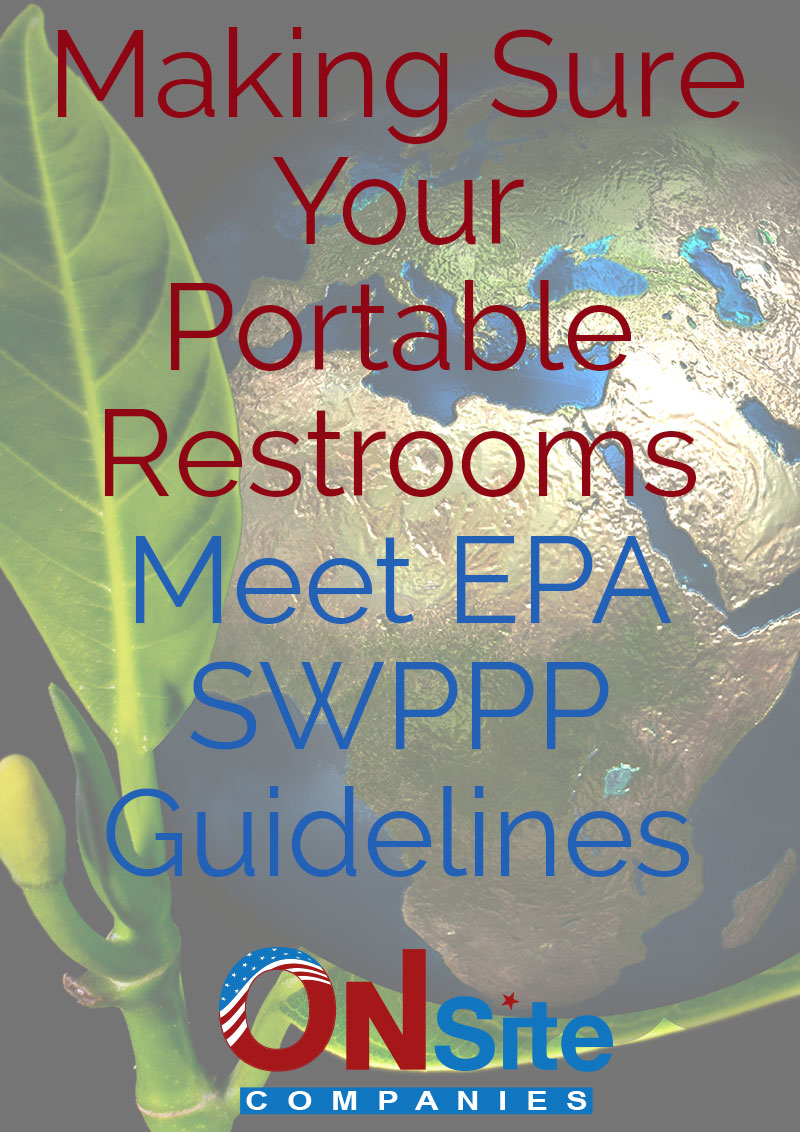If you’ve worked on a construction site in the past, you know that there are tons of regulations with several government agencies. The Environmental Protection Agency (EPA) is one of them, and their job is to obviously protect the environment from pollutants and contaminants used on job sites. Although there are several different guidelines that need to be followed, today we’re going to talk about the Storm Water Pollution Prevention Plan (SWPPP) requirements, and how they pertain to portable restrooms or “porta potties”. A SWPP Plan is required for all job sites one acre or larger, and sites that require a permit to be pulled.

The EPA SWPPP Guide States “Construction projects generate large amounts of waste, which can end up polluting storm water runoff if not properly managed. The suite of BMPs that are described
in your SWPPP must include pollution prevention (P2) or
good housekeeping practices that are designed to prevent contamination of storm water from a wide range of materials and wastes at your site. “ It also states that sites must have a secondary containment plan for portable restrooms.
The Regulations if Your Secondary Containment Fails are:
115.061 DUTY TO NOTIFY AND AVOID WATER POLLUTION.
(a) Except as provided in paragraph (b), it is the duty of every person to notify the agency immediately of the discharge, accidental or otherwise, of any substance or material under its control which, if not recovered, may cause pollution of waters of the state, and the responsible person shall recover as rapidly and as thoroughly as possible such substance or material and take immediately such other action as may be reasonably possible to minimize or abate pollution of waters of the state caused thereby.
(b) Notification is not required under paragraph (a) for a discharge of five gallons or less of petroleum, as defined in section 115C.02, subdivision 10. This paragraph does not affect the other requirements of paragraph (a).
History: 1969 c 931 s 4; 1993 c 341 art 1 s 1
The Minnesota Pollution Control Agency (MPCA) enforces these guidelines, and the goal is for no chemicals to ever touch the ground. Even though the restroom deodorizer is not technically a hazardous material, it still can’t be allowed to escape from the job site.
Containment Pans for a Solution
The secondary containment requirement for portable restrooms must be added to your SWPPP plan, and the easiest way to meet that requirement is through the use of a containment pan. Containment pans are plastic pans that are placed under the portable restroom to catch any runoff that may occur when servicing the portable restroom. These pans are then pumped out by your service technician every time they service the restrooms. Containment pans make it easy and worry free to meet the SWPPP requirements, and you won’t have to worry about creating makeshift containment mechanisms on site.
Containment pans are the fastest and simplest way to meeting your SWPPP requirements for secondary containment, and prevent the need for cleanup in the future. Remember, it is your responsibility to take care of secondary containment so asking for containment pans with your portable restrooms and including the pans in your SWPPP plan prevents you from having to take any additional precautions to prevent storm water runoff from your job site.
If you have any further questions about containment pans and your SWPPP, please feel free to give one of our customer service representatives a call! Containment pans are carried by On Site of St. Paul, Rochester and Mankato MN and St. Louis, MO.